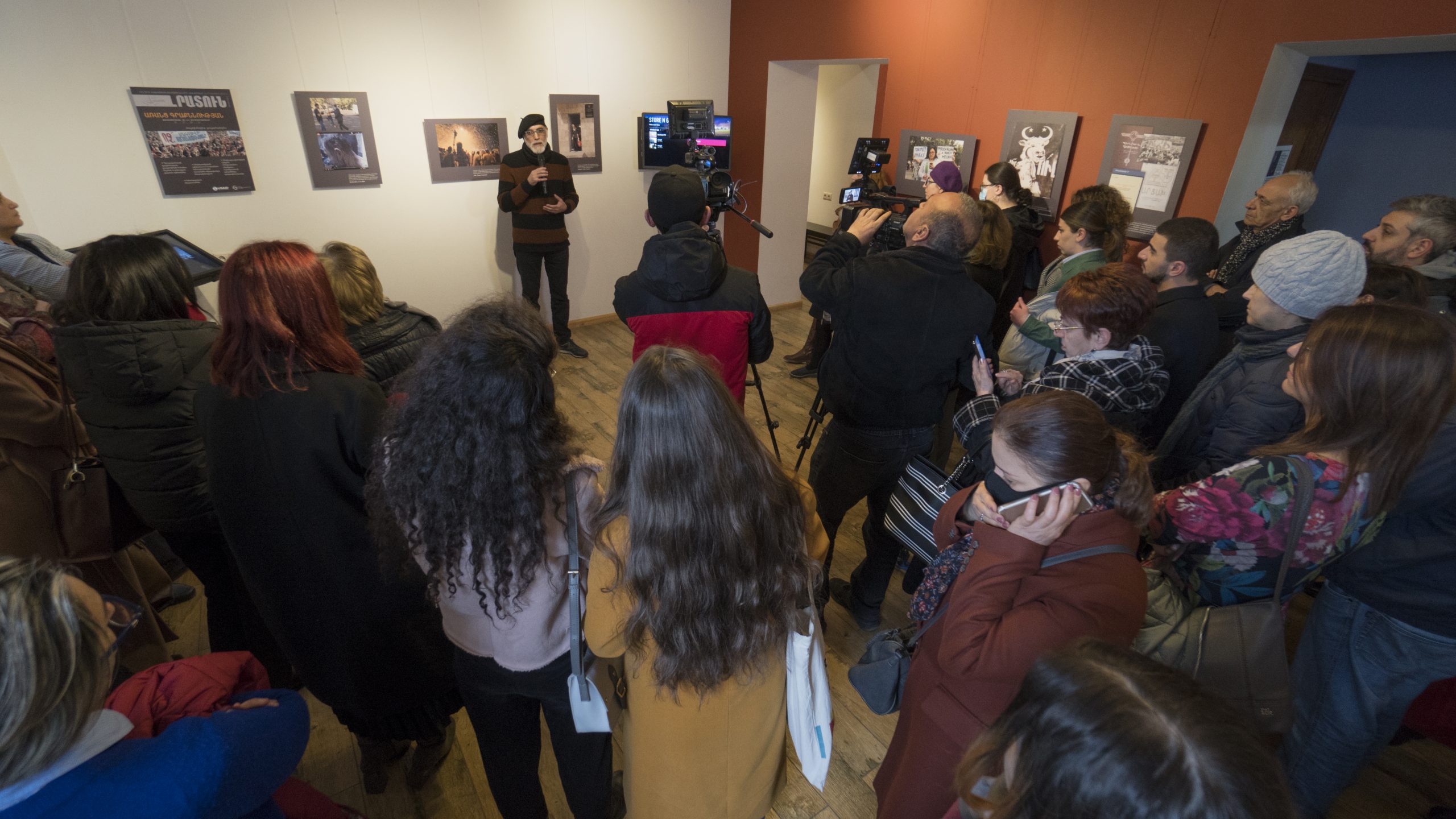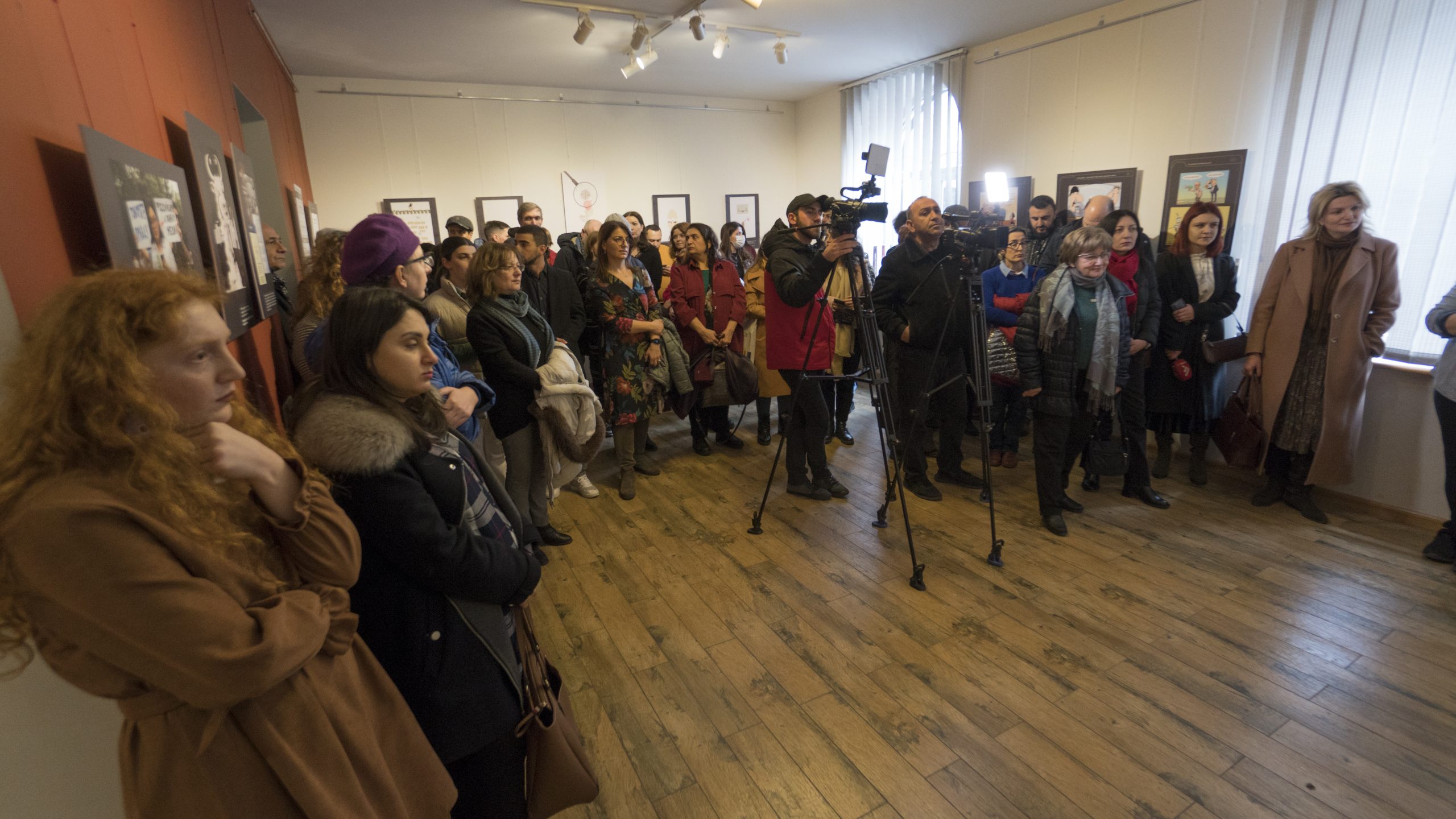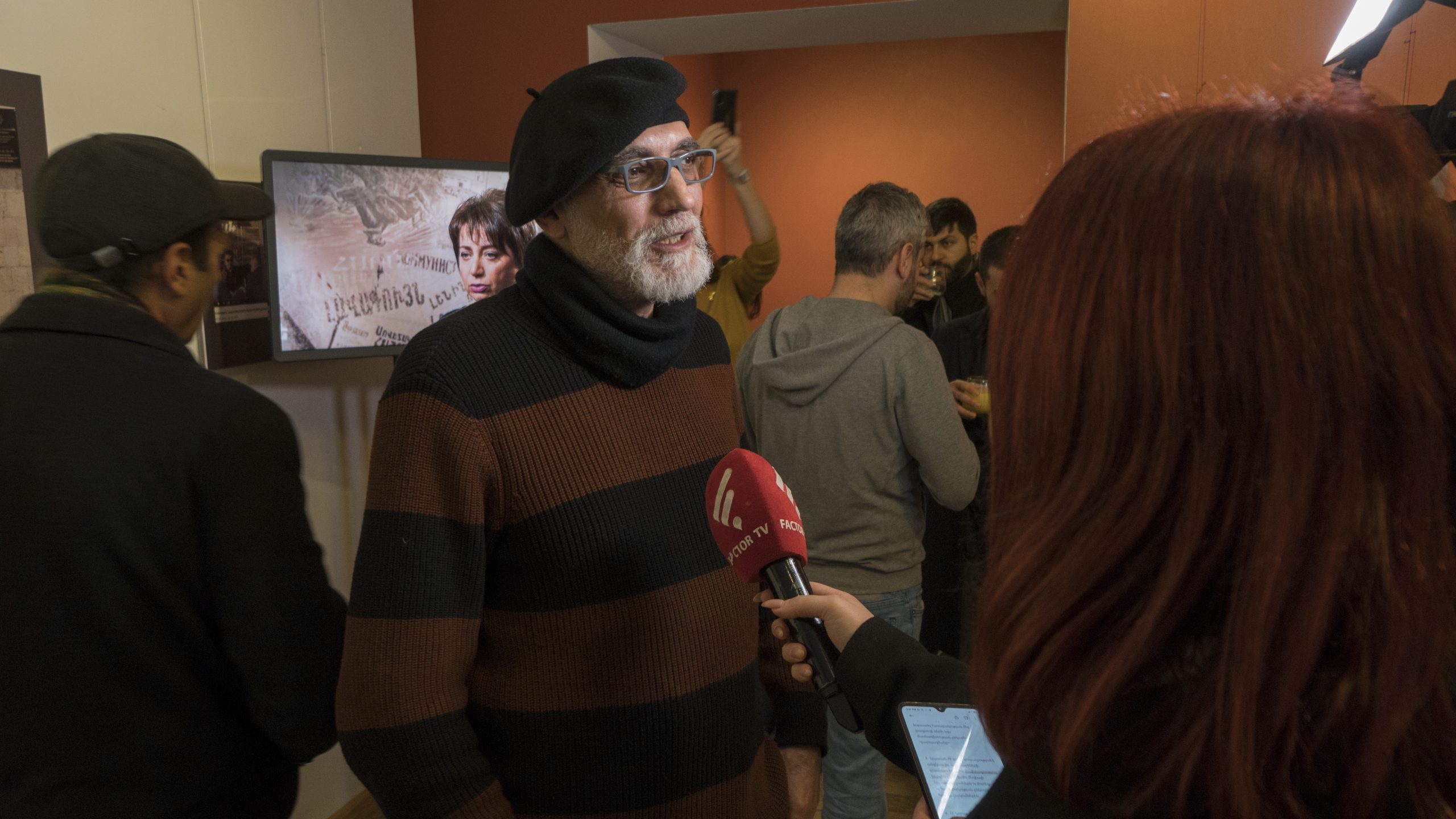
Starting March 23rd, via another exhibition the “Lratun” project tells a story about the problems of human rights coverage in the Armenian media, propaganda, and about the pressure on journalists.
This time the exhibition organized by the Media Initiatives Center combines two: “A man in the palm of your hand?: The Journalist’s Perspective,” and “Without Censorship.”
Thematic publications, videos, and documentaries were used to present the topics in many ways, in-depth interviews were conducted with industry experts.
All these materials help to navigate the history of the modern Armenian media, understand the logic of coverage, and look at the realities of our times when the challenges of the media are rapidly changing.

Nouneh Sarkissian, Director of the Media Initiatives Center, said in her opening remarks that the purpose of this exhibition is to create an atmosphere where people can speak, discuss and reflect on the issues presented. “With this exhibition, we are creating a repository, an archive for education, discussions, and media literacy. Unfortunately, the events that have taken place during these years do not contribute to various professional discussions in the field of journalism.”
According to her, it would be right to dedicate the exhibition to the journalists covering the war, who are currently working in Ukraine, the Russian journalists who are now in Armenia, the Armenian journalists who covered the Artsakh war, and the specialists covering other wars.

Vahram Martirosyan, the head of the “Lratun” project, mentioned that the main content of the exhibition is not presented on the display walls, it is systematized on the screens.
“The constitution and laws protect human rights, but the media incites waves of discrimination against people who think differently and feel differently. Is impartial media protected in the first case, does it protect human rights in the second case? In the next two weeks, the new exhibition of the Lratun project will create an opportunity to reflect on these issues,” said the author of the project.
According to him, these are difficult times for the media, we are in the post-truth stage when there is a lot of falsification and even the specialists do not understand this chaos․ “I hope the new technologies will help us go back to the pre-truth times. The situation will stabilize and it will be possible to work according to the main principles of journalism.”
Human rights activist Nina Karapetyants says that the archiving of media materials allows you to cover many events accurately, as you have facts in the form of publications, photos, videos, and interviews.
“I recommend coming to this exhibition, especially to the younger generation of journalists and specialists, who may not have so much information about the field and the history of journalism. It is important not to be cut off from history, from the past, and not to give in to the manipulations reaching today’s cosmic proportions,” said the human rights activist.
According to her, this exhibition is an opportunity to talk about valuable media and the importance of their work, as they will predetermine the future for Armenia if they adhere to their principles. “Our media field is terribly polluted, and it is very important to be principled, to present different points of view, and to often think about the quality and impact of the media.”

Historian Almast Muradyan, one of the visitors to the exhibition, says that the material is huge and interesting from the point of view of making time comparisons.
“This historical excursion through the media is very useful for different specialists because it both raises questions and gives answers to questions. It is not a narrow field, there are also historical and political science materials, which are still relevant today and can become material for separate research,” says Almast.
The “Lratun” project is a series of multimedia exhibitions, which presents the latest history in Armenia through media coverage, reveals details of the creation of publications, and analyzes and explains the work of the media.
“Lratan” exhibitions have been presented in different years in Yerevan, Gyumri, Vanadzor, Martuni, Goris, and Kapan. This year the exhibition will run in Yerevan until April 6 at the Sargis Muradyan Gallery (38 Isahakyan).
Gayane Asryan
Photos by Hakob Hovhannisyan


Add new comment
Comments by Media.am readers become public after moderation. We urge our readers not to leave anonymous comments. It’s always nice to know with whom one is speaking.
We do not publish comments that contain profanities, non-normative lexicon, personal attacks or threats. We do not publish comments that spread hate.